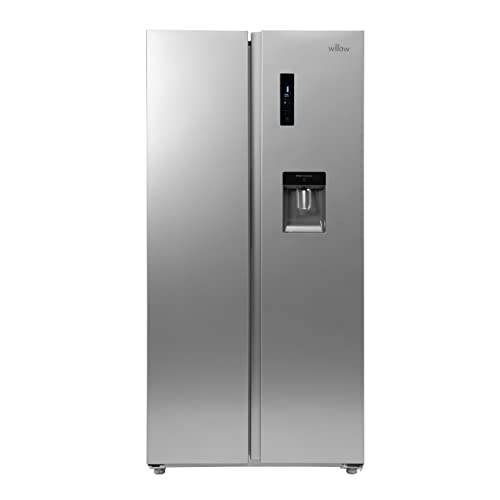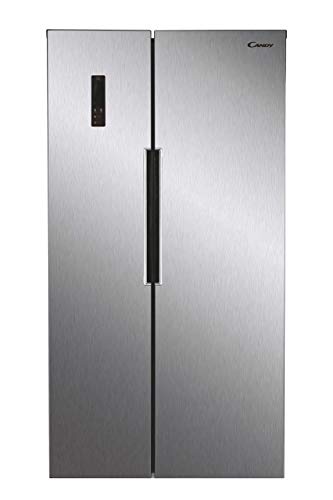5 Killer Quora Answers To Refridgerator UK
페이지 정보
작성자 Aiden 작성일 24-12-24 21:01 조회 3 댓글 0본문
 The History of the Refrigerator
The History of the RefrigeratorThe conventional refrigeration of food generates significant greenhouse gas emissions because of refrigerant leakage, and electrical power consumption. In 2019 the amount of emissions was 3.2% of the total UK annual territorial GHG emissions.
Refrigerators weren't commonplace in British homes until the summer of 1959. Before 1959, the majority of British households relied on cold slabs stored in the pantry. These were inefficient and did not keep a constant temperature.
The History of Fridges in the UK
Fridges are one of the most essential kitchen appliances that allow us to keep food and drinks fresh for days at one time. They're also extremely energy efficient. It's easy, though, to forget that refrigerators were once a luxurious item. It wasn't really until the 1950s that they began to take off. But even then, it took a very hot summer for them to become popular in the UK.
Before refrigerators were invented people would use cold ice boxes that were insulated to keep their food cool. They would gather blocks of ice from lakes during the winter, and then store them throughout the warm summer months. These boxes of ice were far from ideal, however. They required to be carried by an ice man, and they were very heavy. In 1918, the first electric refrigerators were released to the market. But it took a while before they became common in homes.
Nowadays, fridges are a lot more efficient in terms of energy usage than they used to be. They consume less energy than they did a decade ago and some fridges use as little as 4 kW*h per day (equivalent to 170 W continuously). The majority of refrigerators used in homes are energy-efficient, with the majority having an A+ rating.
Early in the 1950s, manufacturers began to introduce refrigerators that had separate compartments for freezers. They also began producing models with a chrome finish which was quite popular at the time. Since the time, refrigerators are now available in many different colours and finishes. Pastel shades, such as pink and turquoise were popular in the 1960s. Earth tones, like almond and avocado green were becoming more popular in the 1970s and 1980s. In the early 1990s stainless steel was beginning to take over.
Fridges in the 1920s
Before fridges the people would use wooden "ice boxes" to keep food and drinks fresh. Ice man would deliver blocks of frozen ice to fill them, and they would keep cool throughout the year. Ice boxes can be found in well-off kitchens.
In 1918, the first electric refrigerator was introduced. It sat atop of the existing ice box in a home. They were heavy and noisy, as well as expensive. They were also known as monitor-tops because of their motors on top of the refrigerator cabinet. William C. Durant bought out the Mellowes refrigerator company in 1918 and set up the Guardian Frigidaire company to mass produce refrigerators. Durant was influenced by a design created by Cistercian monk Marcel Audiffren and Swiss engineer Albert Singrun. This was an absorption refrigerator for sulfur dioxide.
In the 1920s, new refrigerators were affordable to many homes. They could hold more food and beverages, and kept it colder for longer than old ice boxes.
The advertisements on refrigerators were imaginative, enticing and full of promises about ice-cold drinks and fashionable designs. Vintage ads are interesting to read as they give us a glimpse of the world of the day.
At the time of the 1920s, electric refrigerators were commonplace in homes. Electric utilities aided this trend by offering rebates on their bills to those who purchased refrigerators. During the Great Depression, these appliances were considered crucial to home survival and their popularity increased.
Fridges in the 1950s
Refrigerators became more popular in the 1950s. They were still rare in the 1920s. By the late 1960s, they were common in all homes.
The majority of fridges from the early days were utilitarian and had simple designs that were suited to the kitchen decor at the time. The refrigerators were typically smaller and sat on legs. They were available in a range of colors (though most were pastels such as mint). At the time, a number companies were manufacturing fridges including Whirlpool, Gibson, Hotpoint and Tappan.
All of these brands were known for their reliable, high-quality refrigerators. They also expanded their product lines, providing other types of home appliances. For instance, Crosley was a manufacturer of radios before they moved into refrigerators in the 1940's and were known for their compact refrigerators that could be tucked away in smaller spaces.
In the 1950s, refrigerators were more fashionable and were sold to housewives as a status sign. They were designed in a manner that matched the cabinets and the walls of the kitchen, and were usually white with chrome handles.
In the 1960s, refrigerators began to develop into appliances that had separate freezer sections and ice-cube makers. Manufacturers also began to employ cheaper materials, allowing them to sell their products at lower prices.
 Fridges in the 1960s
Fridges in the 1960sIn the 1960s, cheap fridges uk became a necessity in many households. Some families even had two refrigerators. In the 1960s, the average American fridge cost $600 (roughly $7000 in 2024 dollars). At the close of the decade, the cost had dropped to just $200.
The refrigerator was a major technological advancement at the time, revolutionizing kitchens and transforming the way we stored food. The fridge also improved home comfort as it made meat and dairy fresher longer, allowing people to purchase bulk quantities and prepare meals ahead of time and then keep them in the fridge for later.
The first refrigerators used harmful gases like ammonia, methyl chloride, and sulfur dioxide for refrigeration but this was dangerous for humans because these gases leaked from the refrigerators. A number of people died from poisoning and it was only in 1929 that a safe method for cooling food, using carbon dioxide, was created.
It allowed manufacturers to build safer and more efficient refrigerators that could be used in homes. Some refrigerators had an internal freezer accessible by opening the refrigerator door. These were known as bi-door refrigerators, and were extremely popular during the 1950s and 1960s.
The refrigerators of the 1960s were more futuristic than the ones of today, with soft curves and a sleek look that suggested an era of efficiency and domestic freedom. The refrigerators were still big but the boxy look of the 1940s was beginning to fade.
Today's fridges
Today's fridge freezers come in a wide variety of styles, colors and finishes to suit individual tastes and kitchen decors. Certain cheap fridge freezer freezers feature intelligent features that connect to Wi-Fi. This allows you to quickly alter the settings. Others have an inbuilt camera that allows you to monitor the inside of your refrigerator.
French door models dominate the market, as consumers seek out modern features and designs, such as dispensers for water or ice and flexible drawers. In some instances, smart screens are also included. A lot of these appliances are evaluated as A, B or even A+ for energy efficiency following the revamping of the labelling system that is mandatory in refridgerator Uk appliances.
We are awestruck by this Hotpoint model for its sleek design. It includes an innovative UVNano technology that self-sterilises the fridge freezer uk sale to kill germs and two salad drawers that have adjustable humidity sliders. It's also large with plenty of storage space for bottles and jars and a large utility box that fits inside the fridge door.
Refrigerators that don't include a traditional ice tray can use up to four times more power than those that do, so opt for models that have an eco-friendly ICE+ option that uses much less energy. You can also save money by choosing one that comes with an automatic ice maker. This will provide a constant supply of ice ready to use in the morning.
A fridge that's A or A+ in terms of energy efficiency is one of the best actions you can take to protect the environment. It's important to think about the refrigerator's annual consumption of electricity as a part of your household budget when choosing an appliance. It is important to remember that we cannot afford to put electricity on the back burner. Everyone deserves access to reliable, affordable and plentiful electricity to lead a healthy lifestyle, be comfortable, and help protect the earth.
댓글목록 0
등록된 댓글이 없습니다.